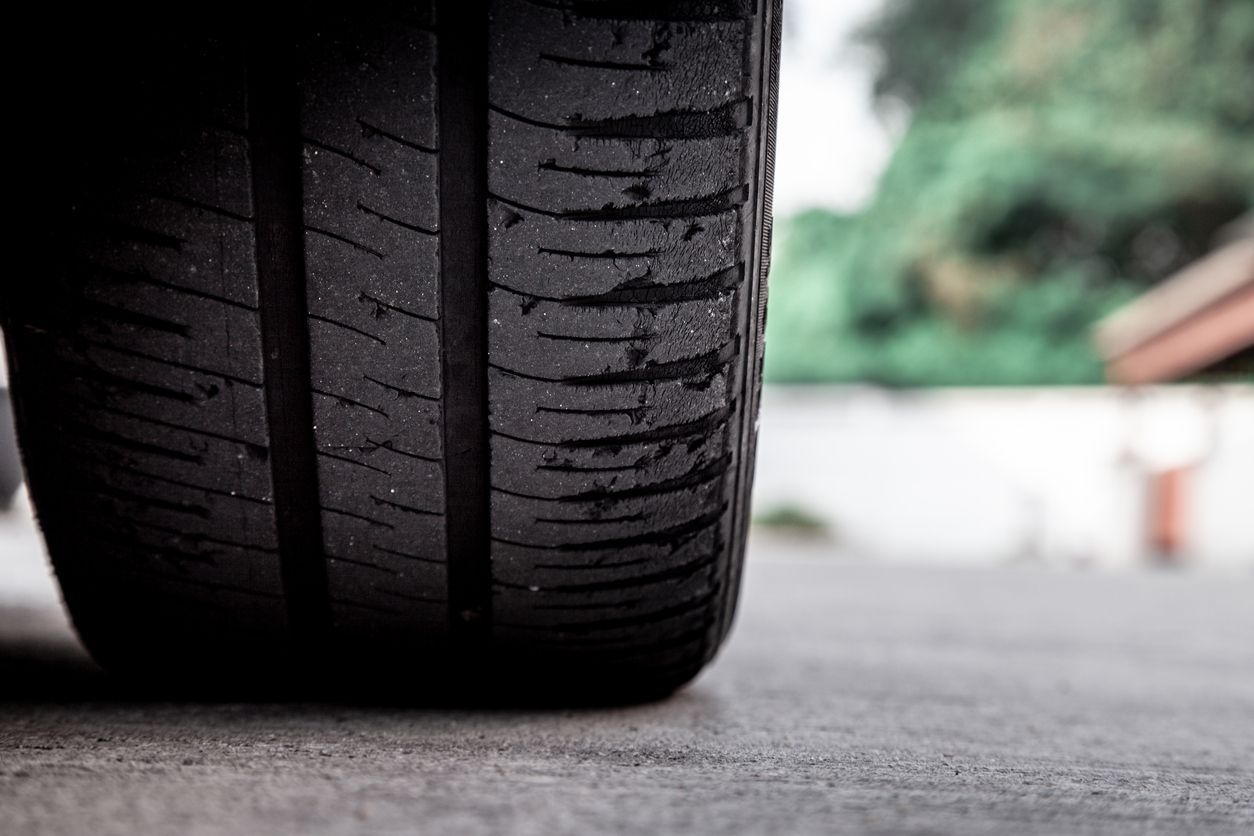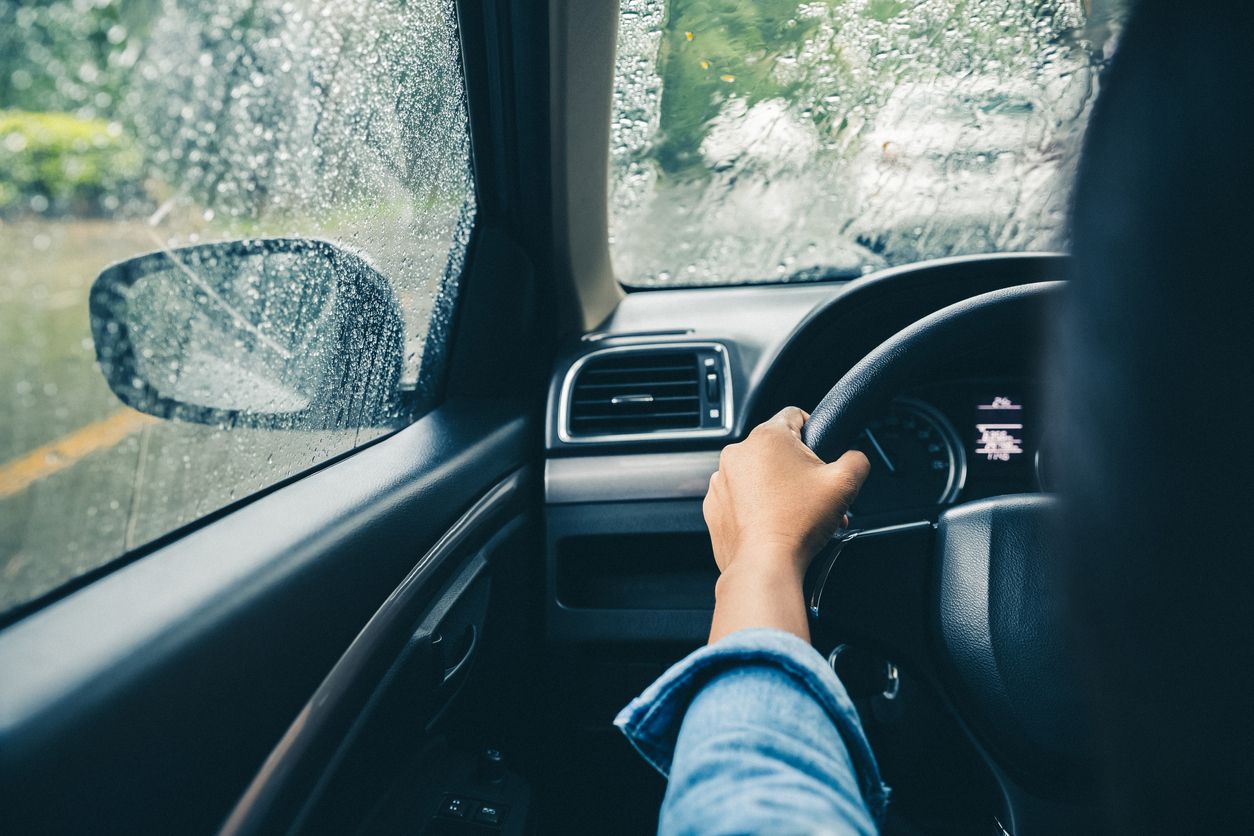Tire wear patterns can tell you a lot about the health of your vehicle — from poor wheel alignment and tire pressure to worn shocks and struts. When neglected for too long, certain tire wear problems can lead to hydroplaning, blowouts, less efficient braking, spinouts, and so much more.
Learn about common tire wear problems and what they mean for your ride.
Inner or Outer Shoulder Wear
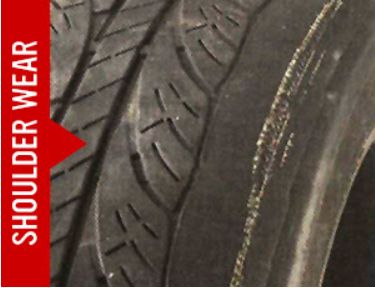
If your tires' inner or outer edges are wearing quicker than the rest of the tread, you may have a wheel alignment issue. This wear pattern often indicates a maladjusted toe (the inward or outward angle of your tires when viewed from above) or camber (the inward or outward angle of your tires when viewed from the front).
Alignment problems can affect your vehicle's natural ability to drive straight and can cause car pull — to the left or right — when you let go of the steering wheel. If you notice any of these issues, visit Tires Plus for alignment services right away.
Center Wear
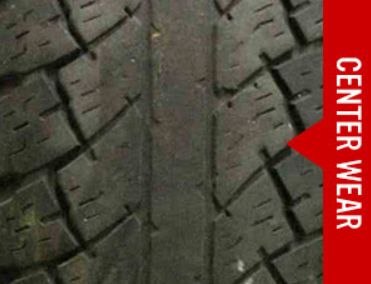
If you observe excessive wear down the center of your tires, there’s a good chance they're overinflated. When tires are overinflated, the center of the tire gets more road time than the rest of the tread, leading to increased center wear.
Driving on overinflated tires can lead to loss of traction, premature tire wear, and make for a rougher, bumpier ride. If you notice excessive center wear, check your tire pressure to ensure the PSI falls within the recommended range.
Edge Shoulder Wear

Excessive edge wear on both sides of a tire often indicates underinflation. Underinflated tires may start to lose their proper shape, leading to uneven weight distribution across the contact patch. With more weight over both tread edges, they may start to wear down significantly faster than other areas on the tire.
Driving with uneven tire pressure can reduce fuel efficiency and increase your risk for a major tire blowout. If you encounter excess wear along the edges of your tires, check your tire pressure immediately and add air as needed.
Cupping/Scalloping Wear
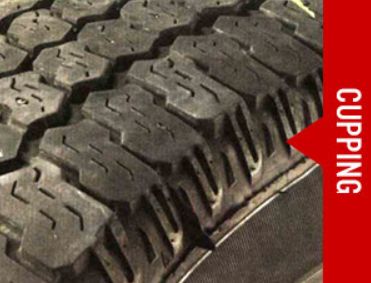
Diagonal scalloping wear of the tire tread or "cupping wear" often indicates compromised suspension components — typically the shocks or struts. Your suspension system keeps your tires from bouncing up and down as you drive by maintaining their constant contact with the road. And when this system becomes compromised, your tires may move more erratically, creating a scalloping pattern in the tread.
If you notice this cupping pattern — or if your vehicle seems less stable, "bounces" as you drive, or is noisier than usual — consider having your suspension system inspected by a knowledgeable technician at Tires Plus.
Patchy, Diagonal Wear
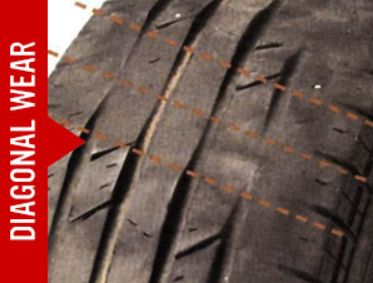
Patchy tire wear can indicate tire imbalance. This wear pattern often happens when a driver goes too long between routine tire rotations and balancing. Fortunately, if caught early, resolving this issue can be relatively simple. You'll minimize the patch wear, extend the lifespan of your tire, and avoid risks like heat buildup, reduced traction, and susceptibility to punctures.
Got Tire Wear Issues? Come to Tires Plus
Cars can’t talk, but our tires' tread often communicates when something has gone awry. So, what do the patterns in your tires say about your vehicle's future? There's no need to purchase a crystal ball. Bring your vehicle to your local Tires Plus, and we'll diagnose and repair the issue for you.
